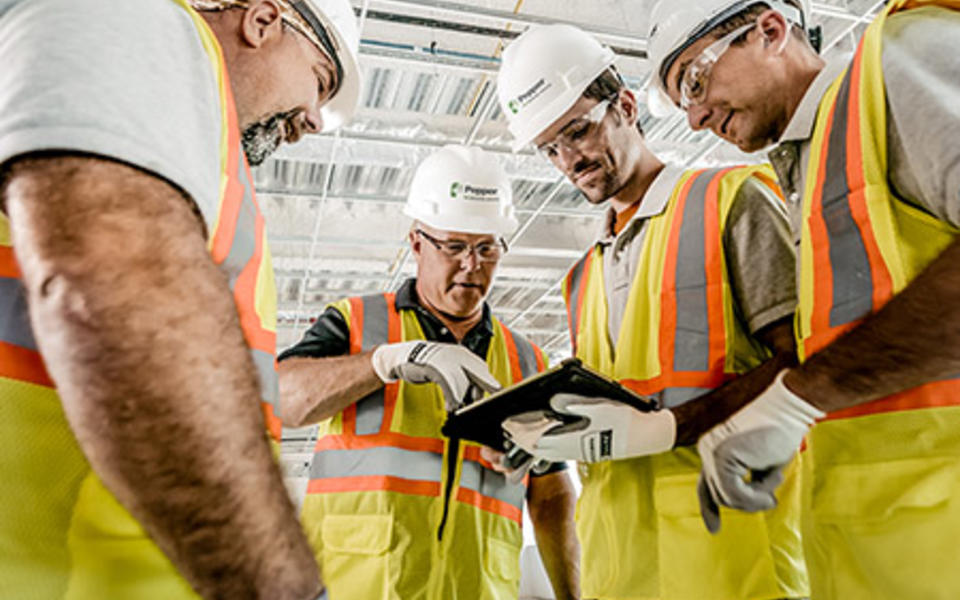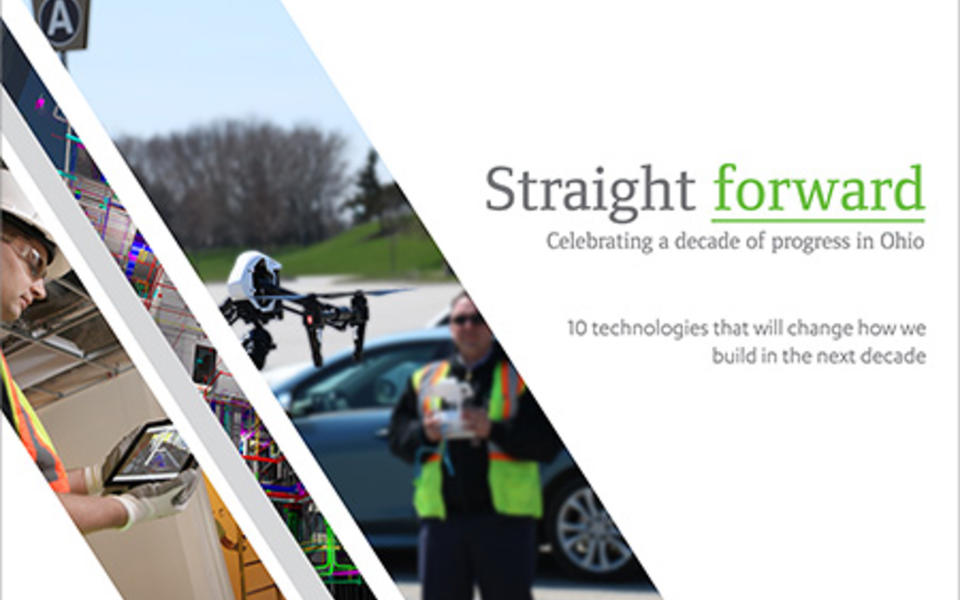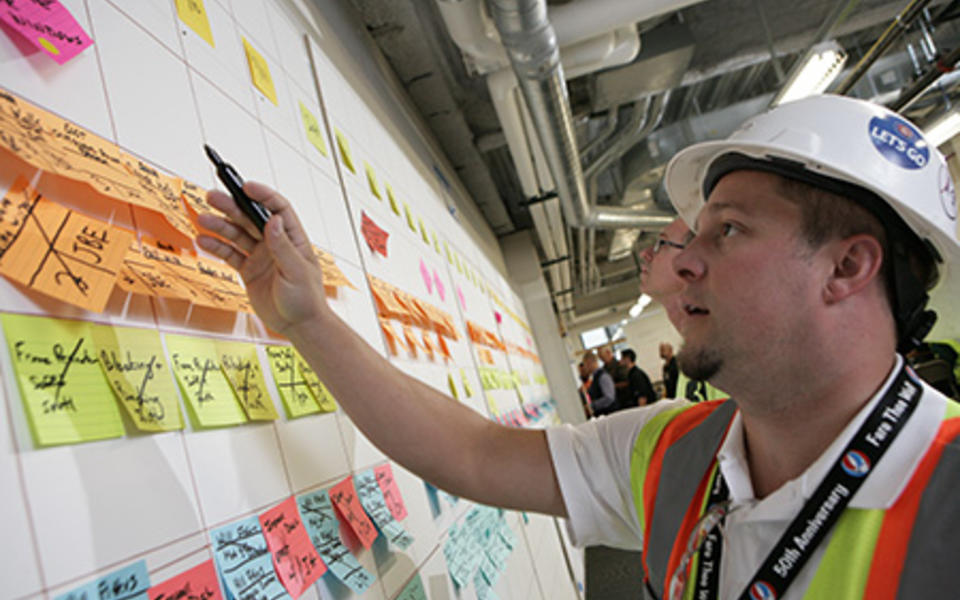Trade partnerships, Virtual construction & technology
For many of us, we wouldn’t know how to begin to do our jobs without a computer, mobile device and other tools we’ve come to depend on every day. Even the oldest generation in the workforce would agree that computers are much more efficient and offer a measure of accuracy that pen and paper can’t provide. Technology is used throughout the construction process to improve productivity and outcomes.
As technology continues to advance, the improvements bring many advantages.
- Improves communication
- Facilitates collaboration
- Helps streamline processes
- Finds ways to enhance performance
- Verifies planning accuracy
- Identifies and resolves issues
- Accelerates activities
The same technologies that help us perform at our best can also contribute to a lean construction delivery and allow everyone to share in the success of a collaborative and well-managed project.
Why should lean construction matter?
The construction industry has a productivity issue. Several sources indicate a decline in construction productivity that continues today. Considering Albert Einstein’s famous definition of insanity, which is “doing the same thing over and over again and expecting different results,” we need a new approach.
We also know from experience that projects with a high level of communication and collaboration tend to run more smoothly. Likewise, teams that are on the same page and openly share information, work better together – and experience a higher level of productivity. Our owners notice a difference too. Even if they don’t specify or choose to sign an integrated project delivery agreement, they still want the principles and performance results of collaborative deliveries like lean construction.
According to the Lean Construction Institute, lean is the “culture of respect and continuous improvement aimed at creating more value for the customer while identifying and eliminating waste.”
Lean construction is the application of the Toyota Production System (TPS) principles to the construction project delivery process. The ultimate goal of lean construction is to eliminate waste from construction. How would you like to see less time spent waiting on budget updates, RFIs or for materials and tools to arrive?
How do the technologies that help us do our jobs contribute to lean?
True success and implementation on construction projects means technology will be utilized by team members who rarely all work for the same organization.
While lean construction focuses on the use of BIM, when referring to this technology as it relates to lean construction, we use Virtual Design and Construction (VDC). The Stanford University Center for Integrated Facility Engineering defines VDC as: “the management of integrated multi-disciplinary performance models of design-construction projects, including the product (i.e., facilities), work processes and organization of the design - construction - operation team in order to support explicit and public business objectives.” In other words, VDC is the process of using the BIM model to minimize the input (cost and schedule) and maximize the output (performance).
BIM is the obvious tech tool, but here’s a look at how the other technologies we use on a daily basis throughout the design and construction process are becoming more collaborative, visual and responsive – and how they are already contributing to the lean construction process.
01. PROJECT PLANNING
SCHEDULING - The famous pull planning approach that involves colored sticky notes typically require everyone to be in the same room. The schedule itself also takes up a significant amount of wall space and paper. Now, with software like Autodesk BIM360 Plan and TouchPlan, team members can create, organize, track and maintain their project plans faster in a virtual environment. These platforms and Visual Schedule Models (4D) help plan, communicate and implement a streamlined project.
ESTIMATING - Model-based estimating can be used downstream, streamlining the translation of information from one phase to the next. BIM also allows for cloud collaboration and real-time updates. Using visuals created in the model, teams can quickly and clearly understand the budget options, allowing the team to make the best decision for the project during Target Value Design (TVD). The model also allows for upfront life cycle cost analysis so owners can consider operating costs along with first costs as they make decisions about their building.
CONSTRUCTABILITY - When looking for means and methods of building the project faster, cheaper and better, VDC allows for safety and quality to be analyzed together with cost and quality. Additionally, strategies like prefabrication are more successful through the use of VDC early on.
02. COMMUNICATION PROTOCOLS
BIDDING – Bid management software automates the process. It organizes bidders and contact lists, tracks responses and integrate better into people’s inboxes, which makes the bidding processes easier. The software can also integrate with other platforms, like a company website and social media.
MEETINGS - Numerous web conferencing systems like Go To Meeting connect out of town team members to the project, saving them travel time and cost. Technology can also improve the effort and quality in meetings minutes. Notes can be taken in software applications directly on computers or mobile tablets and then instantly shared with an entire team. Less time is spent today compiling meeting minutes electronically instead of typing handwritten notes.
03. DOCUMENT MANAGEMENT
SHARED DOCUMENTS AND STORAGE – It starts with one 3D model that houses all of the project data and can be made accessible to the entire project teams via tablets and computers. When there is one source and standard for all documentation, RFIs are eliminated because each takes responsibility for the solutions and outcomes.
Cloud storage makes documents accessible to everyone at all times and from any device, as long as there is a connection. Software platforms allow users to pull information offline when internet access is not available, and then synchronize up to the cloud automatically when they regain internet connectivity. This is particularly helpful for teams in the field by providing the information they need at the point of installation.
Finally, more and more teams are going paperless, made possible by the cloud storage. The advantages are accessibility and accuracy when everyone is able to reference the same source of information.
04. REPORTING
DAILY REPORTS - With features such as speech-to-text, integrated cameras, automatic formatting, and prepopulated templates and standards, team members are spending fewer hours in the day compiling reports at their desk or entering data into a computer. Collaborative construction apps like StratusVue bring efficiency to field operations.
ASSET TRACKING - Portable data collectors or sensors assist with the manual process of keeping track of equipment, vehicles, inventory, tools and personnel. Knowing actual equipment run-time helps manage preventative maintenance schedules and decreases ownership costs. These systems collect information so companies can analyze data and make changes to improve the process. In essence, it has a built-in continuous improvement process, as well as minimizing waste and eliminating mistakes.
TIME TRACKING - Apps that track time offer a huge benefit to the field - for a process that was historically done by hand.
05. PUNCH LISTS
Construction management and other standalone apps and software have transformed the punch-list process. Mobile devices can be used to record and assign items live, attach marked-up photos, and alerts/issues can be communicated instantly to the applicable project team member that needs to address the issue. Automated alerts and notifications of status changes and approaching due dates cuts down on manual follow up.
06. FACILITY MANAGEMENT
Historically, data that was collected during a project and used for design development and 3D coordination was tossed aside at the end of the project because it was not presented in a way the owner could use. However, more owners are seeing the opportunity to use a common language, where the same data that is being used for design and construction can be extended to manage the facility.
When you think about it, the very definition of lean construction implies the use of technology. Technology plays a key role in the success and continued improvement of our work. How can you continuously improve, create more value or eliminate waste without using the latest tools and techniques that are available?
So could technology hold the key to more widespread use of lean construction? While some struggle to understand the principles of lean, they see the value that technology brings to their projects every day. What if we started the conversation differently – with technology?
About the Author







